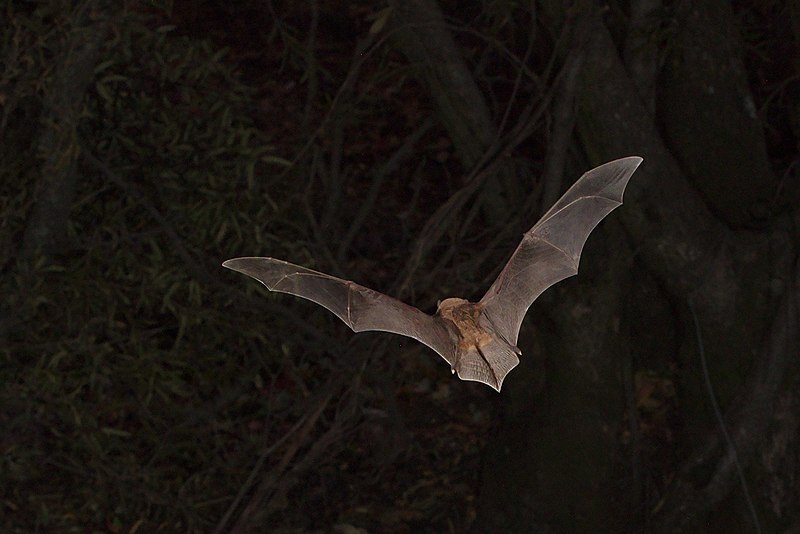Yes, it is possible to get Ebola from bats, as they are known to be natural hosts of the virus.
Ever wonder if those eerie bats fluttering around your backyard could give you Ebola? It’s a spine-chilling thought, right? Well, you’re not alone. With all the buzz about Ebola outbreaks, it’s natural to question if these nocturnal creatures pose a real threat.
In this article, we’re diving into the nitty-gritty of whether you can actually get Ebola from bats. We’ll cut through the fear-mongering and lay down the facts, so you can sleep easy knowing the real risks (or lack thereof). So, grab your flashlight, and let’s explore the truth behind these winged mammals and the infamous virus they carry. By the end, you’ll be equipped with the knowledge to protect yourself and stay informed. Ready? Let’s get to it!
Key Takeaways
- Understanding the link between bats and Ebola.
- Knowing the risks and how Ebola is transmitted.
- Learning preventive measures to avoid contracting Ebola from bats.
The Link Between Bats and Ebola
Bats have long been the subject of folklore and myths, often cast as mysterious creatures of the night. But did you know they also play a significant role in the world of viruses? Among the many pathogens that bats can carry, Ebola is one of the most notorious.
Bats are considered natural reservoirs for the Ebola virus. This means they can harbor the virus without getting sick, acting as a host that can potentially transmit the virus to other animals and humans. The Ebola virus, named after the Ebola River in the Democratic Republic of Congo where it was first identified, has caused multiple outbreaks in Africa, often with devastating effects.
How does this transmission happen, you ask? It’s believed that the virus spreads from bats to humans either directly or through intermediate hosts such as primates. Humans can come into contact with the virus through bat droppings, saliva, or even by eating bat meat, a practice in some regions known as bushmeat hunting. These interactions can happen in various settings, from caves where bats roost to markets where bushmeat is sold.
Understanding this link is crucial because it helps us pinpoint where and how the virus might jump from bats to humans. It also highlights the importance of monitoring bat populations and human activities that increase the risk of exposure. So, while the image of bats swooping down to infect humans with Ebola might be the stuff of horror movies, the reality is a bit more complex and involves specific circumstances and interactions.

How is Ebola Transmitted?
Ebola is a scary virus, no doubt about it. But how exactly does it make the leap from animals like bats to humans? Understanding the transmission pathways is key to grasping the real risks and protecting ourselves.
Direct Contact with Bats
The most straightforward way Ebola can spread from bats to humans is through direct contact. This might happen if you come into close proximity with a bat or its bodily fluids, such as saliva, blood, or urine. For example, spelunkers exploring bat-infested caves or workers in areas with high bat populations could be at higher risk if they inadvertently handle bats or come into contact with bat droppings.
Intermediate Hosts
Bats can also transmit Ebola to other animals, which then become intermediate hosts. Primates, such as monkeys and apes, are particularly susceptible. When these animals come into contact with infected bat droppings or consume fruit contaminated with bat saliva, they can contract the virus. Humans who hunt and eat these animals, or who come into close contact with them, can then contract Ebola. This chain of transmission is especially relevant in regions where bushmeat hunting is common.
Consumption of Bat Meat
In some cultures, bats are hunted for food. The preparation and consumption of bat meat can be a significant transmission route for Ebola. If the meat is not cooked properly or if there is exposure to bat blood during the butchering process, the virus can enter the human body. This practice, while culturally significant in some areas, poses a high risk of spreading not just Ebola but other zoonotic diseases as well.
Human-to-Human Transmission
Once the virus has made the jump from bats (or other animals) to humans, it can spread rapidly from person to person. This typically occurs through direct contact with bodily fluids of an infected person, such as blood, vomit, feces, sweat, or urine. Health care workers, family members, and others who care for infected individuals are particularly vulnerable if they do not follow strict infection control measures.
Recognizing the Risks
Knowing how Ebola is transmitted is one thing, but understanding when and where you’re most at risk is another crucial piece of the puzzle. Let’s break down the scenarios that heighten the risk of contracting Ebola from bats.
Geographic Hotspots
Certain regions are more prone to Ebola outbreaks due to the natural habitats of bats. Central and West Africa, in particular, are areas where bat populations overlap with human activities. Countries like the Democratic Republic of Congo, Guinea, and Sierra Leone have experienced significant Ebola outbreaks, partly due to their dense bat populations. If you’re traveling or living in these regions, it’s important to be aware of the local wildlife and the risks they may pose.
Occupational Hazards
Certain professions are at a higher risk of exposure to Ebola from bats. For instance, spelunkers, miners, and researchers who work in bat caves or other bat habitats face direct exposure. Similarly, wildlife veterinarians, conservationists, and bushmeat hunters are often in close contact with bats or animals that might act as intermediate hosts. Wearing protective gear and following safety protocols can significantly reduce these risks.
Cultural Practices
In many parts of Africa, bushmeat hunting and consumption are not just practices but traditions deeply rooted in local culture. However, these practices come with significant health risks, especially when it involves bats or other wildlife that can carry the Ebola virus. Handling and preparing bat meat without proper precautions can lead to direct exposure to the virus. Awareness and education about the risks, along with safer handling practices, can help mitigate these dangers.
Environmental Factors
Changes in the environment, such as deforestation and habitat destruction, can increase the likelihood of human-bat interactions. As bat habitats shrink, bats are more likely to roost in closer proximity to human settlements, increasing the chances of contact. Urbanization and agricultural expansion into previously wild areas can bring humans into closer contact with bats and other wildlife, creating new pathways for virus transmission.
Travel and Tourism
Travelers exploring regions with high bat populations, particularly those engaging in eco-tourism activities like cave exploration or wildlife observation, should be cautious. Respect wildlife and maintain a safe distance to minimize the risk of exposure. Tour operators and guides should also be well-informed about the risks and take appropriate measures to protect their clients.
Preventive Measures
Knowing the risks is half the battle; now, let’s talk about how to protect yourself from Ebola, especially if you’re in areas where bats are common. Here are some practical steps you can take to minimize your risk:
Avoid Direct Contact with Bats
First and foremost, steer clear of handling bats. Whether you’re exploring caves, hiking in areas with high bat populations, or even just in your backyard, it’s best to admire these creatures from a distance. If you encounter a bat, resist the urge to touch or capture it. Remember, the less direct contact, the lower the risk.
Use Protective Gear
If your job or hobbies bring you into close proximity with bats, make sure to wear appropriate protective gear. This includes gloves, masks, and long-sleeved clothing. For spelunkers and researchers, using a face shield or goggles can provide an extra layer of protection against droppings or saliva. Proper gear is your first line of defense against potential exposure.
Practice Safe Bushmeat Handling
For those in regions where bushmeat hunting is common, it’s crucial to follow safe handling practices. This means wearing gloves when handling animals, thoroughly cooking the meat, and avoiding contact with animal blood or bodily fluids. Educating local communities about the risks and safe practices can go a long way in preventing Ebola transmission.
Maintain Good Hygiene
Good hygiene practices are essential in reducing the risk of Ebola. Regular hand washing with soap and water, especially after handling animals or visiting places where bats roost, is crucial. If soap and water are not available, use an alcohol-based hand sanitizer. Avoid touching your face, particularly your eyes, nose, and mouth, to prevent any potential virus transmission.
Avoid Eating Bat Meat
While it might be a cultural delicacy in some areas, consuming bat meat carries a high risk of Ebola transmission. If possible, avoid eating bat meat altogether. If you must handle or prepare it, ensure it’s cooked thoroughly to kill any potential viruses. However, the safest approach is to refrain from consuming bat meat.
Stay Informed and Vigilant
Keeping up-to-date with health advisories and outbreak information is crucial, especially if you’re in or traveling to areas prone to Ebola. Local health departments and organizations like the World Health Organization (WHO) provide valuable information on current outbreaks and preventive measures. Being informed allows you to take proactive steps in protecting yourself and others.
Report Sick or Dead Bats
If you encounter sick or dead bats, report them to local wildlife authorities or health departments. These organizations can safely handle and investigate potential outbreaks. Avoid touching or handling sick or dead bats yourself, as they could be carriers of the virus.
Debunking Myths
With Ebola being such a feared virus, it’s no surprise that myths and misconceptions abound. Let’s clear the air and debunk some of the most common myths about Ebola and bats.
Myth 1: Bats Attack Humans to Spread Ebola
The image of bats swooping down to attack humans and spread Ebola is pure fiction. Bats are generally shy and avoid human contact. The virus spreads primarily through contact with bat fluids or droppings, not from aggressive behavior. Bats are more likely to flee than fight when encountering humans.
Myth 2: All Bats Carry Ebola
Not all bats carry Ebola. While certain species of fruit bats in Africa are known reservoirs of the virus, many other species are not. It’s important to understand that bats play vital roles in ecosystems, such as pollination and pest control. Demonizing all bats can lead to harmful practices that disrupt these ecological functions.
Myth 3: You Can Get Ebola Just by Being Near Bats
Simply being near bats does not mean you’ll contract Ebola. Transmission requires direct contact with infected bat fluids, such as saliva, blood, or urine. Casual proximity to bats, like seeing them flying in the sky, poses little to no risk. The key is to avoid handling bats or coming into contact with their fluids.
Myth 4: Eating Cooked Bat Meat is Always Safe
Cooking bat meat can reduce the risk of Ebola, but it’s not a foolproof method. Cross-contamination during preparation or inadequate cooking can still pose significant risks. The safest approach is to avoid eating.
Myth 5: Ebola is Easily Spread Through the Air
Ebola is not an airborne virus. It spreads through direct contact with bodily fluids of an infected person or animal. Unlike diseases like the flu or measles, Ebola does not spread through the air via coughs or sneezes. Understanding this helps reduce unnecessary panic and emphasizes the importance of direct contact precautions.
Myth 6: All Bats in the World Are Dangerous
Bats are found all over the world, but not all bats are dangerous or carry diseases like Ebola. In fact, bats are essential for many ecosystems, acting as pollinators, seed dispersers, and pest controllers. The risk of Ebola is mainly associated with certain species of fruit bats in specific regions of Africa. Most bats pose no significant threat to humans.
What to Do If You Suspect Exposure
Suspecting exposure to Ebola can be a frightening experience, but knowing the right steps to take can make a significant difference. Here’s what you should do if you think you’ve been exposed to Ebola via bats:
Seek Immediate Medical Attention
If you believe you’ve come into contact with a bat or bat fluids, it’s crucial to seek medical attention immediately. Inform healthcare providers about the potential exposure to ensure they take the necessary precautions. Early intervention is key to managing any potential infection and reducing the risk of spreading the virus.
Isolate Yourself
To prevent possible transmission to others, isolate yourself from family, friends, and the public. This includes avoiding close contact, sharing personal items, and staying in a separate room if possible. Isolation helps protect those around you while medical professionals assess your condition.
Monitor Your Symptoms
Keep a close watch on any symptoms that may develop, particularly within 21 days of suspected exposure. Common symptoms of Ebola include fever, severe headache, muscle pain, weakness, fatigue, diarrhea, vomiting, abdominal pain, and unexplained bleeding or bruising. If you experience any of these symptoms, inform healthcare providers immediately.
Report the Incident
Notify local health authorities about the suspected exposure. Public health officials can investigate and take steps to prevent further spread. This is especially important if the exposure occurred in a public or high-risk setting, such as a wildlife market or bat-inhabited area.
Follow Medical Guidance
Adhere strictly to the advice and treatment plan provided by healthcare professionals. This may include quarantine measures, diagnostic tests, and specific treatments if an infection is confirmed. Compliance with medical guidance ensures the best possible outcome for your health and helps control any potential outbreak.
Inform Close Contacts
Notify anyone you’ve been in close contact with since the suspected exposure. This includes family members, friends, and coworkers. They may also need to monitor their health and seek medical advice. Promptly informing close contacts helps identify and manage potential secondary cases.
Practice Good Hygiene
Maintain strict hygiene practices to minimize the risk of transmission. This includes frequent hand washing with soap and water, using alcohol-based hand sanitizers, and disinfecting surfaces that may have come into contact with bodily fluids. Proper hygiene is essential in controlling the spread of the virus.
Stay Informed
Keep updated with information from reliable sources such as the World Health Organization (WHO) and the Centers for Disease Control and Prevention (CDC). Staying informed about the latest guidelines and recommendations ensures you’re taking the most effective steps to protect yourself and others.
Conclusion
So there you have it—the lowdown on whether you can get Ebola from bats. While the thought of catching such a deadly virus can be alarming, it’s crucial to separate fact from fiction and approach the topic with a clear, informed perspective.
Recap
- Understanding the Link: Bats are natural reservoirs for the Ebola virus, meaning they can carry the virus without getting sick. This makes them key players in the transmission chain to humans, often through intermediate hosts or direct contact.
- Transmission Pathways: Ebola can spread from bats to humans via direct contact with bat fluids, interaction with infected animals, or consuming improperly handled bat meat. Human-to-human transmission then becomes a significant concern once the virus enters the population.
- Recognizing the Risks: High-risk scenarios include living or traveling in regions with dense bat populations, engaging in occupations or hobbies that involve close bat contact, and participating in bushmeat hunting.
- Preventive Measures: Protecting yourself involves avoiding direct contact with bats, using protective gear when necessary, practicing safe bushmeat handling, maintaining good hygiene, and staying informed about health advisories.
- Debunking Myths: It’s important to dispel common misconceptions, such as the idea that all bats carry Ebola or that the virus can spread through the air. Understanding the truth helps reduce unnecessary fear and focus on effective prevention.
- Steps After Suspected Exposure: If you suspect you’ve been exposed, seek medical attention immediately, isolate yourself, monitor symptoms, report the incident, follow medical guidance, inform close contacts, practice good hygiene, and stay informed.














